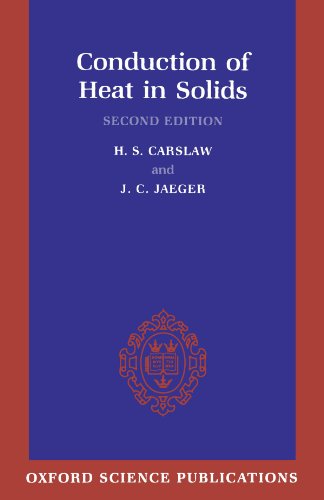Conduction of Heat in Solids download
Par abraham claudia le dimanche, septembre 25 2016, 02:56 - Lien permanent
Conduction of Heat in Solids. H. S. Carslaw, J. C. Jaeger

Conduction.of.Heat.in.Solids.pdf
ISBN: 0198533683,9780198533689 | 517 pages | 13 Mb

Conduction of Heat in Solids H. S. Carslaw, J. C. Jaeger
Publisher: Oxford University Press, USA
Conduction is heat loss that happens between two solids that are in contact with each other. The standard reference for analytical solutions is "Conduction of heat in solids", Carslaw & Jaeger, 1959. You may be able to do some useful scaling of cooling times without getting a full solution. Conduction is a process of heat transfer in solids. For conduction to work there needs to be physical contact between the two systems in question. In this process, heat is transferred from particles to particles of the solid, without the actual movement of the particles. Currently I should simulate the heat conduction through the pulverised materials (like sand) in CFX. When the heat transfer involves solids then we call it conduction. Thermographers must have a solid understanding of how heat is transferred. Students know heat flows in solids by conduction (which involves no flow of matter) and in fluids by convection (which involves flow of matter). We don't necessarily need to take a college level course, but a practical understanding and being well-grounded in physics is essential. Like for solids mode of transfer of heat is conduction. The rate of heat loss on a cross bike will tend to be less than on a road bike, because the speeds are lower. I don´t think it´s a good idea to model it as a continous solid because of the gap between the sand grains.